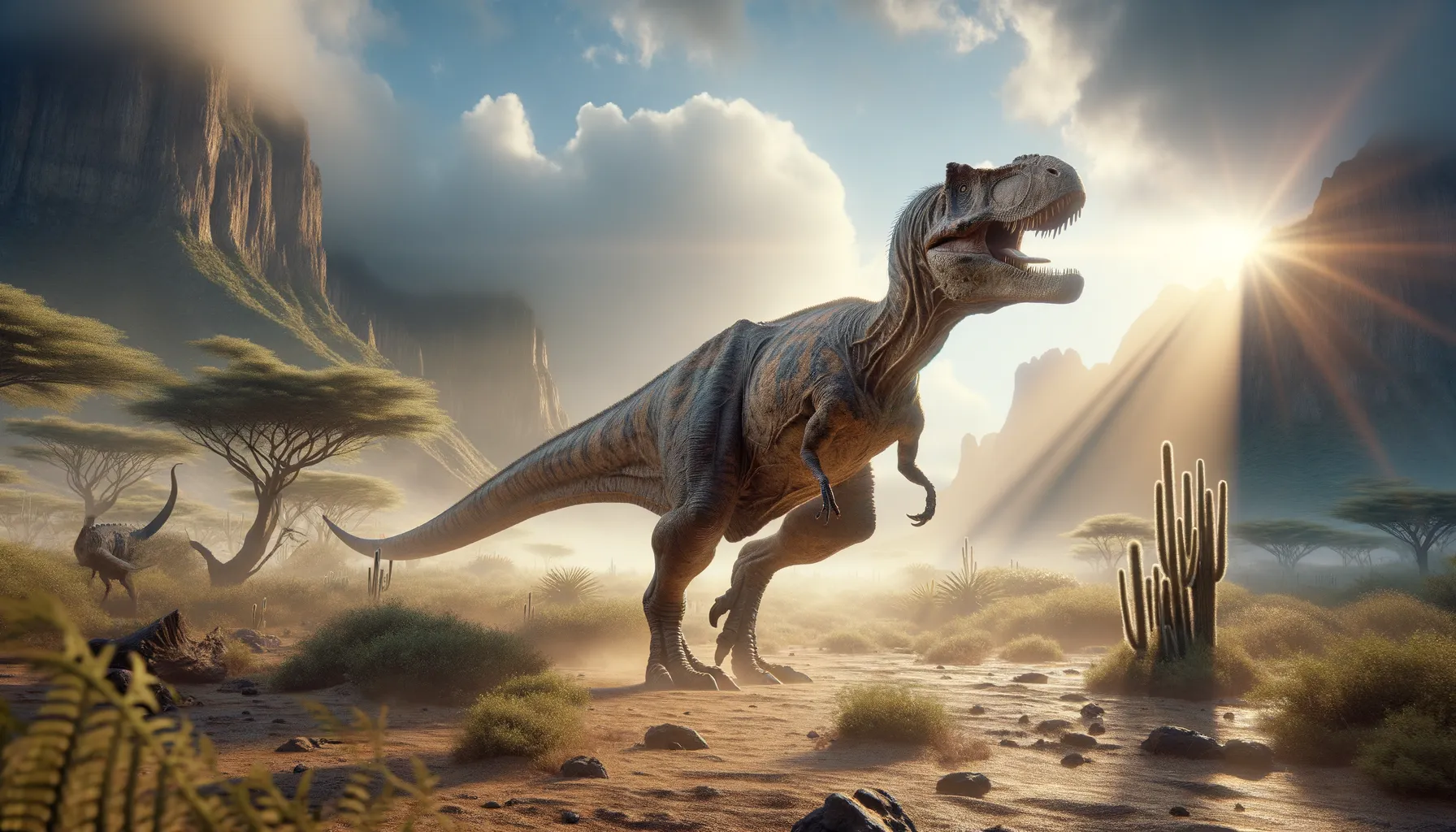
Saltriosaurus
Italy's prehistoric predator, agile and fierce.
Period
Jurassic
Length
Could reach lengths of about 8 meters.
Height
Stood approximately 4 meters tall.
Weight
Estimated to weigh around 1 ton.
Saltriosaurus was a theropod dinosaur from the early Jurassic period, primarily found in what is now Italy. As one of the largest predators of its time, it possessed strong legs and agile movements. Its fossil remains have provided crucial insights into the evolution of early theropods, adding to its significance in the paleontological community. Saltriosaurus is notable for its combination of primitive and advanced features, showcasing the transitional forms between different dinosaur species.
Diet
Saltriosaurus was a carnivore, hunting smaller dinosaurs and possibly scavenging when opportunities arose. Its sharp teeth and claws were perfect tools for catching and dismembering prey, indicating a preference for flesh-based meals.
Hunting
As an active predator, Saltriosaurus likely relied on its agility and speed to pursue prey. It may have employed surprise attacks, using its strong legs to quickly close in on prey before it could escape.
Environmental challenges
Living in the early Jurassic, Saltriosaurus faced a changing environment with shifting climates and evolving ecosystems. Competition for food sources would have been a constant challenge, as it contended with other predators for meals. Additionally, the rise of large herbivores presented both opportunities and threats, impacting its hunting strategies.
Speed
Likely a fast runner, similar to other theropods.
Lifespan
Estimated to be around 20-30 years.
First discovery
Found in Saltrio, Italy in 1996 by Angelo Zanella.
Fun Facts
- Saltriosaurus was a theropod dinosaur that lived during the Early Jurassic period.
- It was discovered in northern Italy, making it one of the rare dinosaur finds from this region.
- Saltriosaurus was likely a carnivorous predator, similar to other theropods of its time.
- The fossils of Saltriosaurus were unearthed in the 1990s, exciting paleontologists with the possibility of uncovering more theropod information.
- This dinosaur was estimated to be about eight meters long, making it one of the larger theropods of its era.
- Saltriosaurus helps paleontologists understand the diversity and distribution of early dinosaurs in Europe.
- The name 'Saltriosaurus' refers to nearby Saltrio, the town in Italy where its fossils were found.
Growth and Development
Saltriosaurus likely went through rapid growth phases, reaching maturity relatively quickly compared to some other dinosaur species. This quick growth required a constant intake of protein, influencing its hunting habits. Its development from juvenile to adult likely involved significant changes in size and strength, necessary adaptations for survival.
Habitat
Saltriosaurus inhabited what is now modern-day Italy, which during the Jurassic, was a lush, tropical environment with abundant vegetation. This environment supported a diverse array of life, providing ample hunting grounds. Rivers and forests offered both cover and corridors for Saltriosaurus to navigate and hunt effectively.
Interaction with other species
While primarily a solitary hunter, Saltriosaurus would have interacted with other species through both competition and predation. Its presence would have influenced the behavior of smaller dinosaurs as they avoided becoming prey. Fossils suggest it may have encountered different theropods, necessitating territorial displays or conflicts.
Natural lifespan
In the wild, it likely had a natural lifespan of up to 30 years.
Reproduction
Saltriosaurus, like other theropods, was likely an oviparous species, laying eggs in carefully chosen nest sites. Reproduction strategies would have included guarding nests to protect against predators and ensuring suitable conditions for egg incubation. The hatchlings would need to grow rapidly to evade predation.
Social behaviour
Saltriosaurus may have exhibited some degree of social behavior, particularly during breeding seasons when finding mates was essential. However, it is generally considered to have been a solitary creature, with social interactions mainly occurring during territorial disputes or competition for food.
Fossil locations
The primary fossils of Saltriosaurus were discovered in the Saltrio quarry in Northern Italy. These remains have been crucial in understanding early theropod evolution and are one of the few Jurassic dinosaur fossils found in the region. The rarity of these fossils adds to their significance in the paleontological record.
